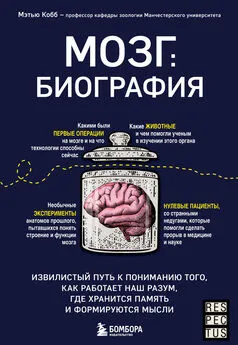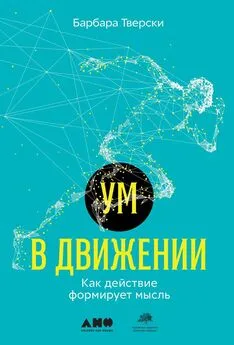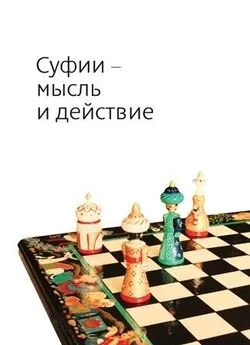Барбара Тверски - Ум в движении [Как действие формирует мысль] [litres]
- Название:Ум в движении [Как действие формирует мысль] [litres]
- Автор:
- Жанр:
- Издательство:Литагент Альпина
- Год:2020
- Город:Москва
- ISBN:978-5-0013-9354-2
- Рейтинг:
- Избранное:Добавить в избранное
-
Отзывы:
-
Ваша оценка:
Барбара Тверски - Ум в движении [Как действие формирует мысль] [litres] краткое содержание
Книга известного когнитивного психолога Барбары Тверски посвящена пространственному мышлению. Это мышление включает в себя конструирование «в голове» и работу с образами в отношении не только физического пространства, но и других его видов – пространств социального взаимодействия и коммуникации, жестов, речи, рисунков, схем и карт, абстрактных построений и бесконечного поля креативности. Ключевая идея книги как раз и состоит в том, что пространственное мышление является базовым, оно лежит в основе всех сфер нашей деятельности и всех ситуаций, в которые мы вовлекаемся.
Доступное и насыщенное юмором изложение серьезного, для многих абсолютно нового материала, а также прекрасные иллюстрации привлекут внимание самых взыскательных читателей. Они найдут в книге как увлекательную конкретную информацию о работе и развитии пространственного мышления, так и важные обобщения высокого уровня, воплощенные в девять законов когниции.
Ум в движении [Как действие формирует мысль] [litres] - читать онлайн бесплатно ознакомительный отрывок
Интервал:
Закладка:
Daniel, M. P., & Tversky, B. (2012). How to put things together. Cognitive Processing , 13(4), 303–319.
Tversky, B., Agrawala, M., Heiser, J., Lee, P., Hanrahan, P., Phan, D., … Daniel, M. P. (2006). Cognitive design principles for automated generation of visualizations. In G. L. Allen (Ed.), Applied spatial cognition: From research to cognitive technology (pp. 53–75). Mahwah, NJ: Erlbaum.
Роботы собирают стул по инструкции «ИКЕА»
Suárez-Ruiz, F., Zhou, X., & Pham, Q. C. (2018). Can robots assemble an IKEA chair? Science Robotics , 3(17), eaat6385.
Warren, M. (2018, April 18). Can this robot build an IKEA chair faster than you? Science. Взято с сайта http://www.sciencemag.org/news/2018/04/can-robot-build-ikea-chair-faster-you.
Классические работы по инфографике
Bertin, J. (1983). Semiology of graphics: Diagrams, networks, maps . Madison: University of Wisconsin.
Card, S. K., Mackinlay, J. D., & Shneiderman, B. (1999). Readings in information visualization: Using vision to think . San Francisco, CA: Morgan Kaufman.
Ценности эпохи Просвещения
Pinker, S. (2018). Enlightenment now: The case for reason, science, humanism, and progress . New York, NY: Penguin.
История схем и схемологии
Bender, J., & Marrinan, M. (2010). The culture of diagram . Stanford, CA: Stanford University Press.
Stjernfelt, F. (2007). Diagrammatology: An investigation on the borderlines of phenomenology, ontology, and semiotics (Vol. 336). New York, NY: Springer Science & Business Media.
Спонтанное использование пространства в сообщениях о времени, качестве и предпочтении детьми и взрослыми разных культур
Tversky, B., Kugelmass, S., & Winter, A. (1991). Cross-cultural and developmental trends in graphic productions. Cognitive Psychology , 23(4), 515–557.
Метафорическое использование в языке понятий верха и низа
Clark, H. H. (1973). Space, time, semantics, and the child. In T. E. Moore (Ed.), Cognitive development and acquisition of language (pp. 27–63). New York, NY: Academic Press.
Lakoff, G., & Johnson, M. (2008). Metaphors we live by . Chicago, IL: University of Chicago Press.
Talmy, L. (2000). Toward a cognitive semantics . Cambridge, MA: MIT Press.
Вы являетесь центром своей социальной сети
Yu, L., Nickerson, J. V., & Tversky, B. (2010). Discovering perceptions of personal social networks through diagrams. In A. K. Goel, M. Jamnik, & N. H. Narayanan (Eds.), Diagrammatic representation and inference: 6th International Conference, Diagrams 2010, Portland, OR, USA, August 9–11, 2010, Proceedings (pp. 352–354). Berlin, Germany: Springer-Verlag Berlin Heidelberg. doi:10.1007/978–3–642–14600–8_50.
Люди видят линии там, где их нет: фигуры Канижа
Kanizsa, G. (1976). Subjective contours. Scientific American , 234(4), 48–53.
Одержимость линиями
Tversky, B. (2011). Obsessed by lines. In A. Kantrowitz, A. Brew, & M. Fava (Eds.), Thinking through Drawing: Practice into Knowledge: Proceedings of an Interdisciplinary Symposium on Drawing, Cognition and Education (p. 15). New York, NY: Teachers College Columbia University Art and Art Education.
Tversky, B. (2013). Lines of thought. In H. D. Christensen, T. Kristensen, & A. Michelsen (Eds.), Transvisuality: The cultural dimension of visuality: Vol. 1: Boundaries and creative openings (pp. 142–156). Liverpool, England: Liverpool University Press.
Tversky, B. (2016). Lines: Orderly and messy. In Y. Portugali & E. Stolk (Eds.), Complexity, cognition, urban planning and design (pp. 237–250). Dordrecht, the Netherlands: Springer.
«Линия – это точка, отправившаяся прогуляться» (Клее)
Klee, P. (n. d.). A line is a dot that went for a walk. Paul Klee: Paintings, Biography and Quotes. Взято с сайта http://www.paulklee.net/paul-klee-quotes.jsp.
Точки, линии, плоскости
Kandinsky, W. (1947). Point and line to plane . Translated by H. Dearstyne & H. Rebay. New York, NY: Guggenheim. (Исходное издание опубликовано в 1926 г.)
Klee, P., & Moholy-Nagy, S. (1953). Pedagogical sketchbook . New York, NY: Praeger.
Интерпретация и создание линейных и столбчатых графиков
Zacks, J., & Tversky, B. (1999). Bars and lines: A study of graphic communication. Memory & Cognition , 27(6), 1073–1079.
Разные выводы при разных форматах визуализации данных
Kessell, A., & Tversky, B. (2011). Visualizing space, time, and agents: Production, performance, and preference. Cognitive Processing , 12(1), 43–52.
Nickerson, J. V., Corter, J. E., Tversky, B., Rho, Y. J., Zahner, D., & Yu, L. (2013). Cognitive tools shape thought: Diagrams in design. Cognitive Processing , 14(3), 255–272.
Nickerson, J. V., Tversky, B., Corter, J. E., Yu, L., Rho, Y. J., & Mason, D. (2010). Thinking with networks. In Proceedings of the Annual Meeting of the Cognitive Science Society , 32(32).
Tversky, B. (2011). Visualizing thought. Topics in Cognitive Science , 3(3), 499–535.
Tversky, B., Corter, J. E., Yu, L., Mason, D. L., & Nickerson, J. V. (2012, July). Representing category and continuum: Visualizing thought. In International Conference on Theory and Application of Diagrams (pp. 23–34). Berlin, Germany: Springer, Berlin, Heidelberg.
Tversky, B., Gao, J., Corter, J. E., Tanaka, Y., & Nickerson, J. V. (2016). People, place, and time: Inferences from diagrams. In M. Jamnik, Y. Uesaka, & S. Elzer Schwartz (Eds.), Diagrammatic representation and inference. Diagrams 2016. Lecture Notes in Computer Science (Vol. 9781, pp. 258–264). Cham, Switzerland: Springer, Cham.
Стрелки
Denis, M. (2018). Arrow in diagrammatic and navigational spaces. In J. M. Zacks & H. A. Taylor (Eds.), Representations in mind and world: Essays inspired by Barbara Tversky (pp. 63–84). New York, NY: Routledge.
Heiser, J., & Tversky, B. (2006). Arrows in comprehending and producing mechanical diagrams. Cognitive Science , 30(3), 581–592.
Horn, R. E. (1998). Visual language . Bainbridge Island, WA: Macrovu.
MacKenzie, R. (n. d.). Diagrammatic narratives: Telling scientific stories effectively with diagrams (Honors thesis in psychology). Stanford University, Stanford, CA.
Mayon, C. (2010). A child’s conception of the multiple meanings of arrow . (Unpublished master’s thesis). Columbia Teachers College, New York, NY.
Tversky, B., Heiser, J., MacKenzie, R., Lozano, S., & Morrison, J. B. (2007). Enriching animations. In R. Lowe & W. Schnotz (Eds.), Learning with animation: Research implications for design (pp. 263–285). New York, NY: Cambridge University Press.
Tversky, B., Zacks, J., Lee, P., & Heiser, J. (2000). Lines, blobs, crosses and arrows: Diagrammatic communication with schematic figures. In M. Anderson, P. Cheng, & V. Haarslev (Eds.), Theory and application of diagrams. Diagrams 2000. Lecture notes in computer science (Vol. 1889, pp. 221–230). Berlin, Germany: Springer, Berlin, Heidelberg.
Анимированные визуализации
Mayer, R. E., & Anderson, R. B. (1991). Animations need narrations: An experimental test of a dual-coding hypothesis. Journal of Educational Psychology , 83(4), 484.
Mayer, R. E., & Moreno, R. (2002). Animation as an aid to multimedia learning. Educational Psychology Review , 14(1), 87–99.
Tversky, B., Heiser, J., Mackenzie, R., Lozano, S., & Morrison, J. (2008). Enriching animations. In R. Lowe & W. Schnotz (Eds.), Learning with animation: Research implications for design (pp. 263–285). New York, NY: Cambridge University Press.
Tversky, B., Heiser, J., & Morrison, J. (2013). Space, time, and story. In B. H. Ross (Ed.), The psychology of learning and motivation (pp. 47–76). San Diego, CA: Elsevier Academic Press. https://doi.org/10.1016/B978–0–12–407237–4.12001–8.
Tversky, B., Morrison, J. B., & Betrancourt, M. (2002). Animation: Can it facilitate? International Journal of Human-Computer Studies , 57(4), 247–262.
Zacks, J. M., & Tversky, B. (2003). Structuring information interfaces for procedural learning. Journal of Experimental Psychology: Applied , 9(2), 88.
Жестовые интерфейсы развивают мышление и навык счета
Segal, A., Tversky, B., & Black, J. (2014). Conceptually congruent actions can promote thought. Journal of Applied Research in Memory and Cognition , 3(3), 124–130.
Изотип и универсальный пиктографический язык
Neurath, O. (1936). International Picture Language. The first rules of Isotype . London, England: Kegan Paul.
Neurath, O., & Ogden, C. K. (1937). BASIC by Isotype . London, England: K. Paul, Trench, Trubner.
Фасилитатор, использующий графику
Horn, R. E. (1999). Information design: Emergence of a new profession. In R. E. Jacobson (Ed.), Information design (pp. 15–33). Cambridge, MA: MIT Press.
Схемы помогают учиться
Carney, R. N., & Levin, J. R. (2002). Pictorial illustrations still improve students’ learning from text. Educational Psychology Review , 14(1), 5–26.
Levie, W. H., & Lentz, R. (1982). Effects of text illustrations: A review of research. ECTJ , 30(4), 195–232.
Mayer, R. E. (2002). Multimedia learning. In B. H. Ross (Ed.), The Psychology of learning and motivation (Vol. 41, pp. 85–139). New York, NY: Academic Press.
Mayer, R. E., & Gallini, J. K. (1990). When is an illustration worth ten thousand words? Journal of Educational Psychology , 82(4), 715.
Tversky, B., Heiser, J., & Morrison, J. (2013). Space, time, and story. In B. H. Ross (Ed.), The psychology of learning and motivation (pp. 47–76). San Diego, CA: Elsevier Academic Press. https://doi.org/10.1016/B978–0–12–407237–4.12001–8.
Простая схема, убедившая Билла Гейтса посвятить деятельность своего фонда всемирной охране здоровья
Я благодарю за этот пример Элеанор Фокс.
Duenes, S. (2008, February 25). Talk to the newsroom: Graphics director Steve Duenes. New York Times . Взято с сайта https://www.nytimes.com/2008/02/25/business/media/25asktheeditors.html.
Kristof, N. D. (1997, January 9). For third world, water is still a deadly drink. New York Times . Взято с сайта http://www.nytimes.com/1997/01/09/world/for-third-world-water-is-still-a-deadly-drink.html.
Читать дальшеИнтервал:
Закладка:
![Обложка книги Барбара Тверски - Ум в движении [Как действие формирует мысль] [litres]](/books/1063976/barbara-tverski-um-v-dvizhenii-kak-dejstvie-formir.webp)
![Барбара Морриган - Сердце, что растопит океан [litres]](/books/1059584/barbara-morrigan-serdce-chto-rastopit-okean-litre.webp)
![Рольф Добелли - Искусство ясно мыслить [litres]](/books/1067492/rolf-dobelli-iskusstvo-yasno-myslit-litres.webp)
![Александр Кондрашов - Жизнь в движении [litres]](/books/1074016/aleksandr-kondrashov-zhizn-v-dvizhenii-litres.webp)
![Мартин Рис - Всего шесть чисел. Главные силы, формирующие Вселенную [litres]](/books/1082236/martin-ris-vsego-shest-chisel-glavnye-sily-formir.webp)
![Джон Гревилл Агард Покок - Момент Макиавелли: Политическая мысль Флоренции и атлантическая республиканская традиция [litres]](/books/1143945/dzhon-grevill-agard-pokok-moment-makiavelli-politi.webp)
![Кира Бег - Король моих мыслей [litres самиздат]](/books/1148970/kira-beg-korol-moih-myslej-litres-samizdat.webp)
![Ива Коде - Мы мыслим… [litres самиздат]](/books/1149538/iva-kode-my-myslim-litres-samizdat.webp)


